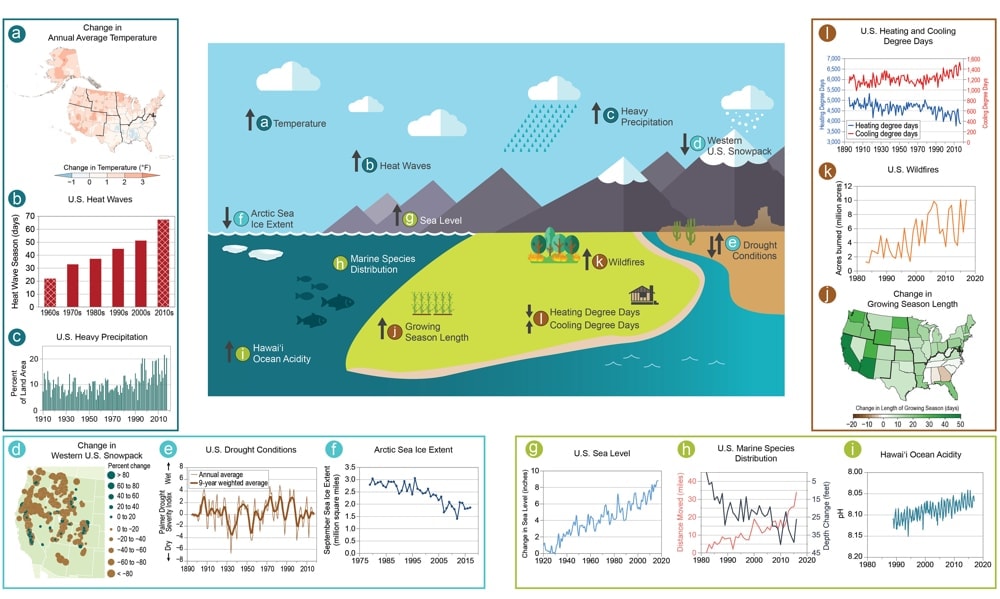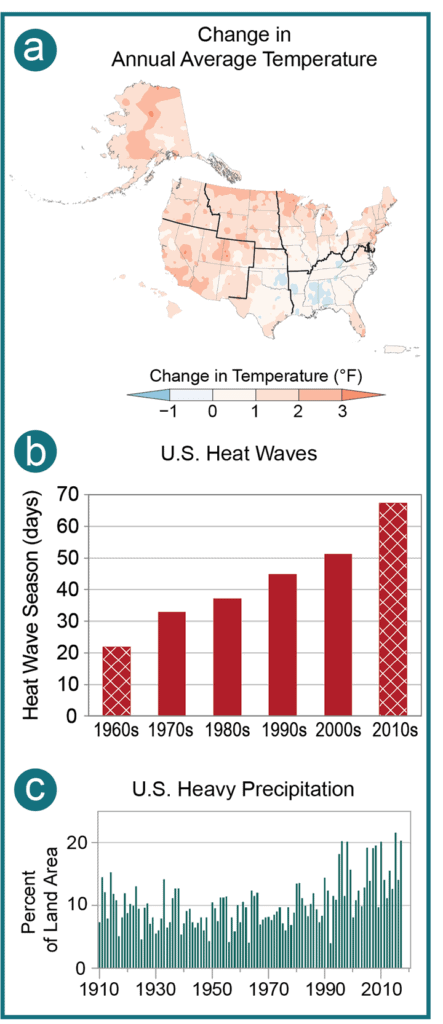By Kevin Juhasz
For Huskie Tools
Lineworkers perform the dangerous task of maintaining infrastructure all year long. That work becomes critical in the wake of severe weather, and it’s likely the workers will be needed more in the years to come.
The debate over what is causing climate change goes on, but the one fact that has been widely supported by science is that Earth is warming, and it’s affecting the weather to the point where it will have a growing impact on the United States and the jobs of lineworkers.
Every four years since 1990, the National Climate Assessment has been compiled by the U.S. Global Change Research Program and delivered to the President and Congress. The report is designed to look at how the climate and weather have changed over the last few decades, assess where it may be headed and advise on the effect these changes will have on the United States and its various industries.

One big effect of the warming world is the impact it has on storms throughout the nation, but those changes vary by the type of storm and the region of the United States.
In the case of hurricanes, climate changes are not producing an increase in the number of hurricanes that appear in a single season. However, there have been notable changes to how the storms behave as a result of rising temperatures and rising sea levels. Hurricanes are beginning to reach intensity quicker and sustaining that intensity longer. This happened with four hurricanes in 2017. Hurricane Harvey was one of them, and it produced record-breaking rainfall that could be attributed to warmer water in the Gulf of Mexico. Hurricane Irma was another serious storm that “shattered the existing record for the length of time over which it sustained winds of 185 miles per hour,” the report stated.
This has a two-fold effect on the jobs that lineworkers do. First, the longer the hurricane blows and the slower it moves over populated areas, the greater the chance it will increase damages to the infrastructure. Second, the heavier rainfall can make the jobs of lineworkers more dangerous than they already are. Extensive and heavy flooding can make it difficult for crews to begin the work of restoring electricity and communications at a time when both of these items are critical to the recovery of a community.
There are also some trends in severe weather that could have further effect on lineworkers. The amount of days with tornadoes has actually decreased, especially since 2000, but the number of tornadoes that occur on storm days has seen an increase. More tornadoes can mean a higher chance of damage, and more tornadoes occurring in an area can delay the response for repairs. It’s also not just the tornadoes that are the issue. While the report was unable to find enough data to determine the frequency and severity of winds related to thunderstorms, there has been an increase in this over the last few years.

There are companies, though, that recognize the risk involved, and are using technology and preparation to help make sure that crews are ready and protected in their quest to restore needed power.
Hurricane Florence made landfall on Sept. 14, 2018. It had spent much of its life as a Category 4 storm, slowing down to Category 1 when it hit the Carolinas. Category 1 is still a hurricane, though, and Florence was an especially destructive storm. The hurricane stalled when it reached landfall, pounding the area with 90 m.p.h. winds and drenching the area with rain for two days.
When it was all over, Florence had left behind more than $24 billion in damage with $17 billion of that in North Carolina alone. Millions of people were left without power in the wake of the storm. That’s when Duke Energy stepped in to restore vital electricity. With the help of their employees and 40,000 other workers from across the United States and Canada, Duke was able to perform an award-winning recovery effort, restoring power to more than 1.2 million people in the first three days of the recovery.

One of the reasons Duke was able to work so efficiently was the preparation efforts the company has put into place. Preparation is vital because storms are so different that it’s difficult to know for sure what the end result will be.
“We do as much preplanning as we can before a storm hits,” explained Meghan Miles, spokesperson for Duke Energy. “We have a team of meteorologist who always monitor weather forecast, look at current conditions and historical data, but each storm has its own unique challenges so sometimes we’ll see these challenges as they arise.”
The company also takes a look at their inventory, making sure they have enough supplies and equipment needed to tackle any tasks that may arise. They also do aerial inspections of transmission lines before a storm to make sure the lines are free of any obstructions or vegetation that might cause issues.
“We use special equipment to help do damage assessment to figure out what types of tools, equipment and machinery are need to get power restored,” Miles said. “We need to identify new routes to avoid flooded areas. It’s a whole coordinated effort to be able to get where damage occurred and figure out the best plan to navigate to those locations and how to restore power.”
Duke developed a geographic information systems in response to Hurricane Irma in 2017. The system allows the company to continually monitor road conditions to ensure that crews would be able to reach problem areas safely.
Edison Electric Institute, which represents U.S. investor-owned electric companies, awarded Duke Energy its Emergency Recovery Award in January 2019 for the efforts the company made after Florence.
